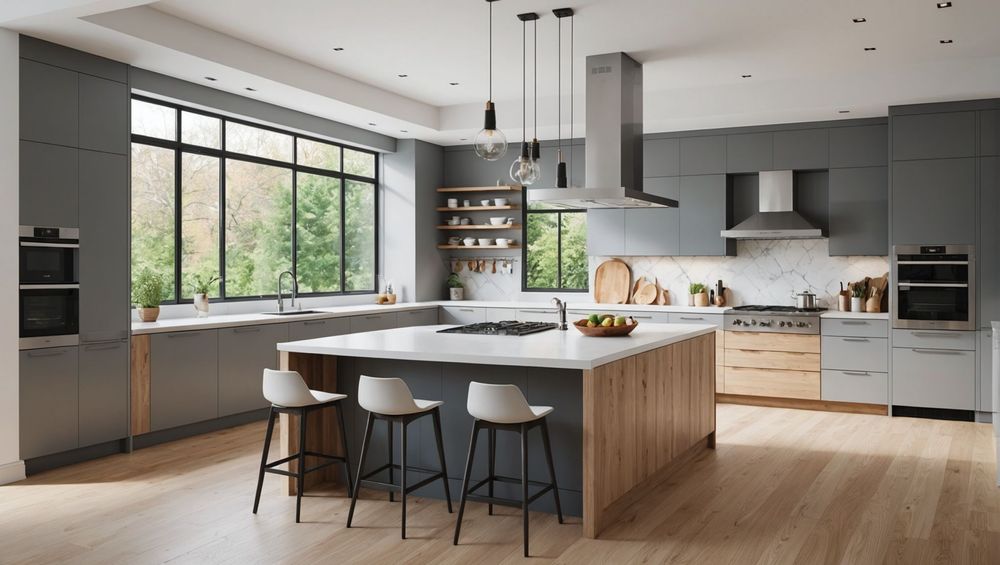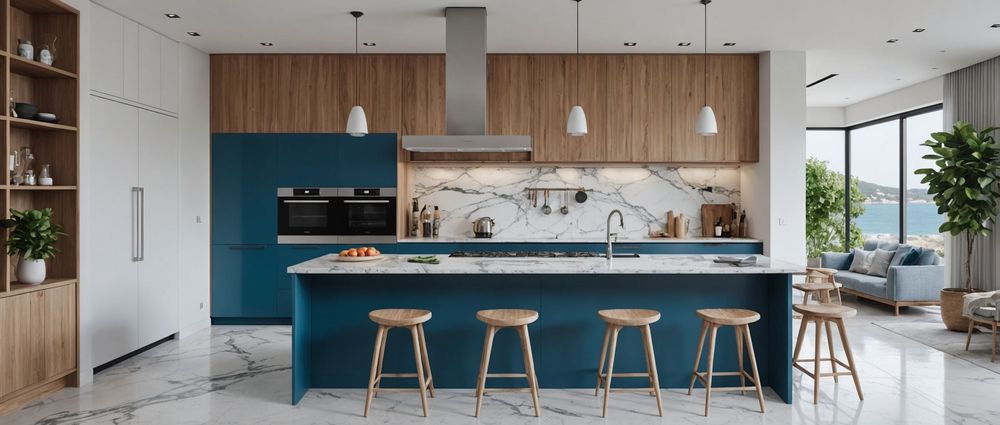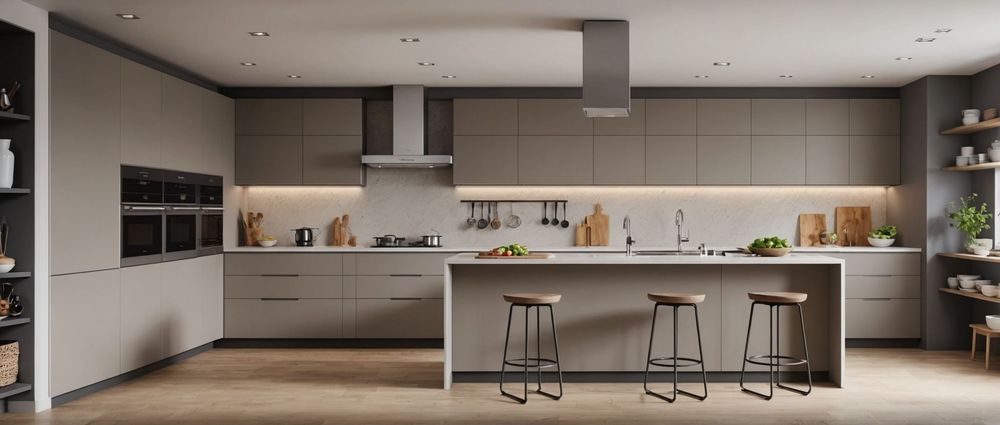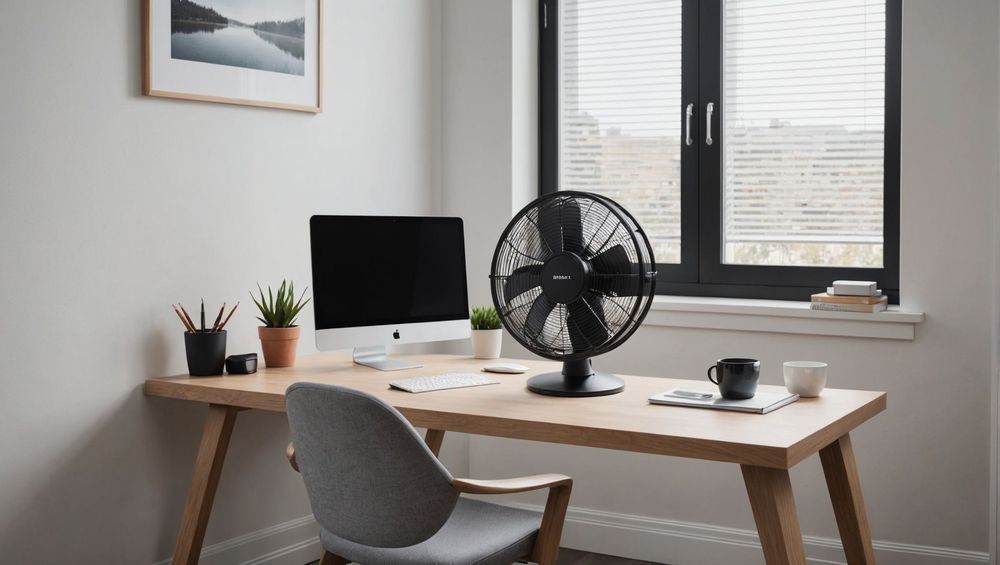Chimneys play a crucial role in modern modular kitchens, not just in their aesthetic appeal but also in enhancing functionality. They serve to eliminate smoke, odors, and grease, ensuring a cleaner and healthier kitchen environment. In this article, we will explore various types of chimney designs suitable for modular kitchens, their unique advantages, and how they can elevate your cooking experience.
1. Wall-Mounted Chimneys

Wall-mounted chimneys are among the most popular choices for modular kitchens due to their sleek appearance and efficient operation. These chimneys are attached directly to the wall above the cooking range, providing an unobtrusive look while serving a practical purpose. They are particularly effective in kitchens with limited space and can easily blend in with the cabinetry. Additionally, wall-mounted chimneys can be fixed at various heights depending on user preference and kitchen layout.
A major benefit of wall-mounted chimneys is their powerful suction capability, which efficiently removes smoke and odors from the kitchen. This feature can greatly improve indoor air quality, making cooking a more enjoyable experience. Overall, wall-mounted chimneys are a perfect choice for both functionality and style.
2. Island Chimneys

For kitchens designed with a central island, island chimneys are the go-to option, as they are suspended from the ceiling above the cooking area. These types of chimneys not only serve their practical purpose but also add a striking focal point to the kitchen’s design. Island chimneys provide a modern look and can be found in various sizes and designs to suit different spaces.
One of the primary benefits of island chimneys is their high suction power, which effectively manages smoke and vapor produced while cooking. Additionally, they can create a more open kitchen atmosphere, allowing easy interaction while cooking. The unique designs can showcase personalized style and can integrate advanced technology features, such as touch controls and LED lights, creating an upscale cooking experience.
3. Built-In Chimneys
Built-in chimneys are designed to be integrated seamlessly into the cabinetry of the kitchen. This type of chimney is hidden from view, offering a minimalist look that appeals to many homeowners. Built-in chimneys can be placed above the cooking range or incorporated into kitchen islands.
The main advantage of built-in chimneys is their space-saving design, perfect for smaller kitchens that benefit from less visual clutter. They also create a uniform look throughout the kitchen space. Built-in models often come with advanced technological features like noise reduction, automatic sensor operation, and easy-to-clean filters, making them a convenient choice for busy cooks.
4. Under-Cabinet Chimneys
As the name suggests, under-cabinet chimneys are mounted beneath the kitchen cabinets. This option is particularly useful for those looking for a cost-effective solution that doesn’t compromise on performance. They are designed to be compact and efficient, making them an excellent choice for kitchens with limited wall space.
Under-cabinet chimneys can effectively eliminate odors and grease, ensuring that your kitchen remains fresh and clean. Their discreet design helps them blend into the overall decor while still delivering the needed functionality. This type of chimney is usually equipped with multiple fan speeds, allowing customization based on cooking needs and minimizing energy consumption.
5. Downdraft Chimneys
Downdraft chimneys are a unique solution that draws smoke and grease downwards toward the cooking surface. Typically installed directly into the cooktop or behind it, these chimneys are ideal for open-concept spaces as they do not interrupt sight lines. When not in use, downdraft chimneys retract, allowing for a clean and unobtrusive kitchen aesthetic.
The benefits of downdraft chimneys include their space-saving architecture, making them suitable for smaller kitchens or those aiming for a minimalist style. Their unique design effectively captures smoke and fumes, ensuring that they do not spread throughout the kitchen environment. Downdraft chimneys are also very functional and can be outfitted with filter systems for easier maintenance and cleaning.
Conclusion
Choosing the right chimney for your modular kitchen is essential for maintaining a clean and pleasant cooking environment. Each type of chimney offers unique benefits that cater to various kitchen designs and personal preferences. Whether it’s the aesthetic appeal of wall-mounted chimneys, the modern design of island chimneys, or the compact efficiency of built-in and under-cabinet models, understanding these options can help you maximize your kitchen experience. Ultimately, a well-chosen chimney not only enhances functionality but also adds a touch of elegance to your modular kitchen.
FAQs
1. What size chimney should I choose for my kitchen?
The size of your chimney should be determined by the cooking appliance you are using. Typically, choose a chimney that matches the width of your cooking range for optimal performance.
2. How often should I clean my chimney?
It is recommended to clean your chimney every three to six months, depending on usage. Regular maintenance ensures efficient suction and prolongs the life of the chimney.
3. Are chimney filters easy to replace?
Yes, most chimney filters can be easily removed and replaced. Check the manufacturer’s recommendations for specific instructions on maintenance.
4. Can I install a chimney myself?
While some chimney types may be suitable for DIY installation, it is advisable to consult a professional to ensure proper fitting and functionality.
5. Do chimneys consume a lot of electricity?
Energy consumption largely depends on the type and model of the chimney. Many modern chimneys are designed to be energy-efficient, using less power while still providing effective performance.



